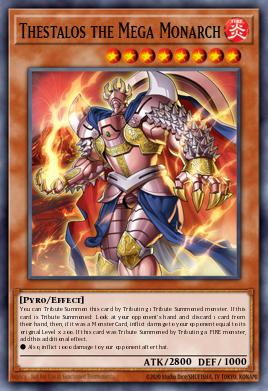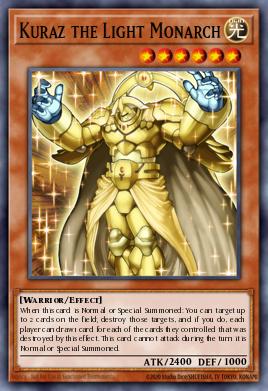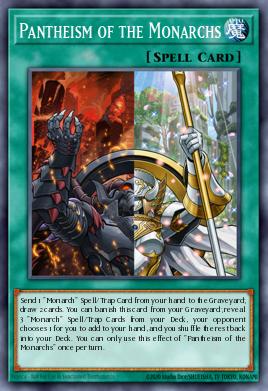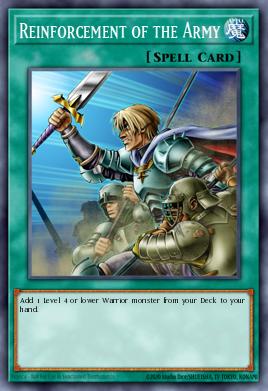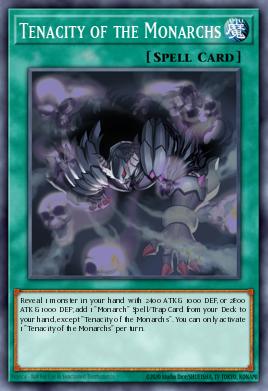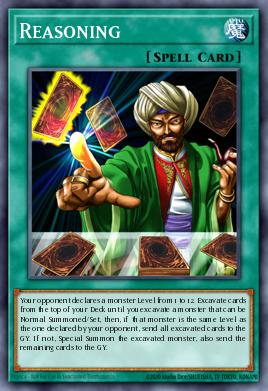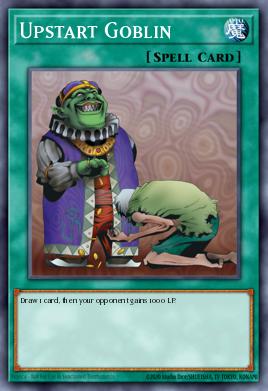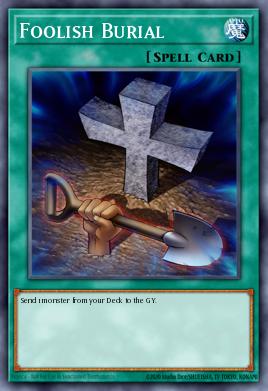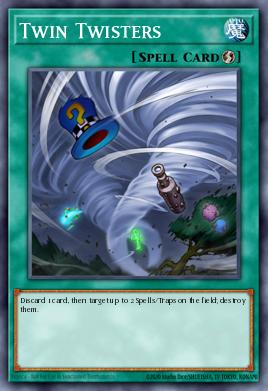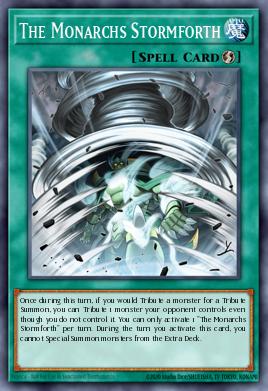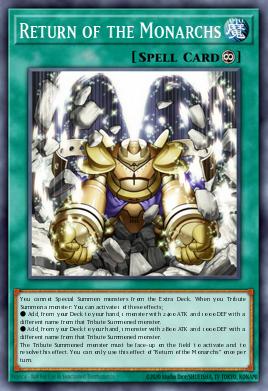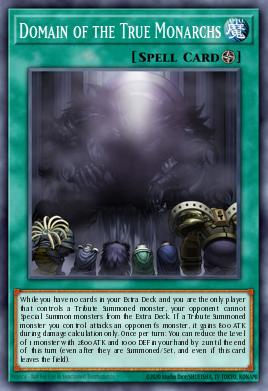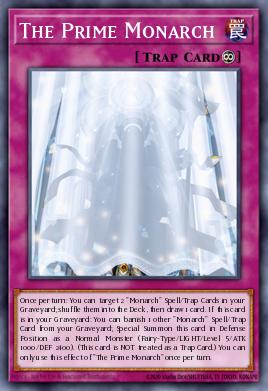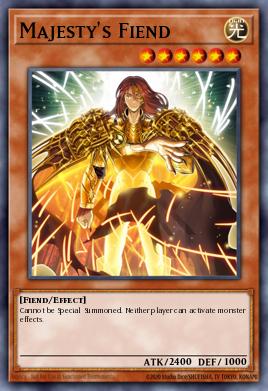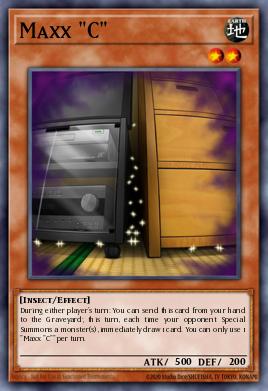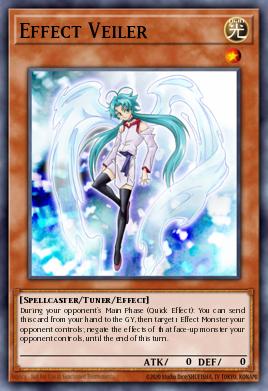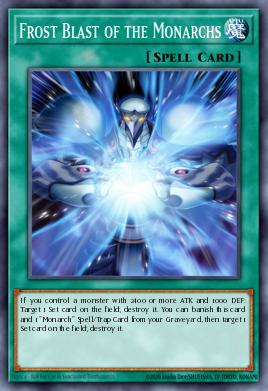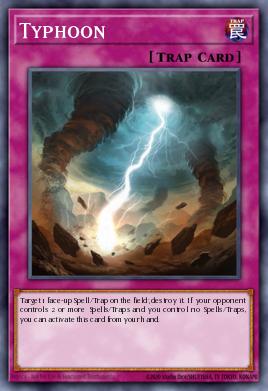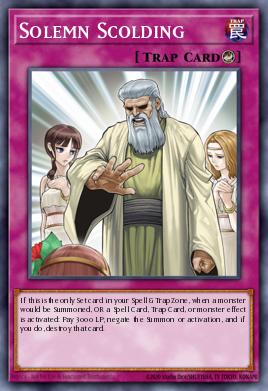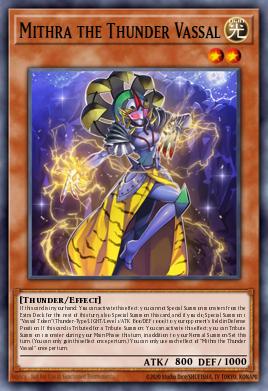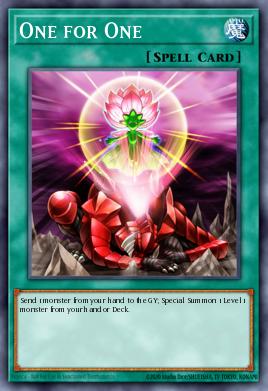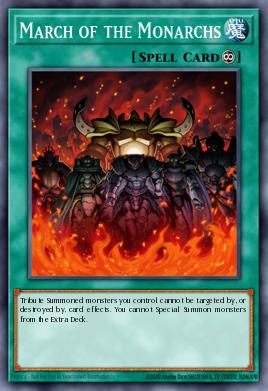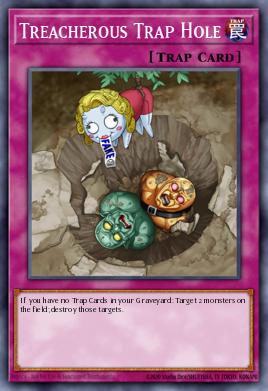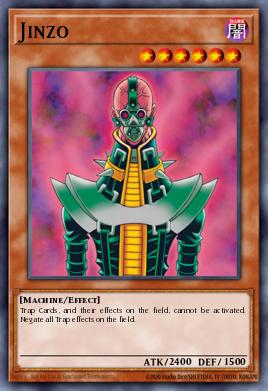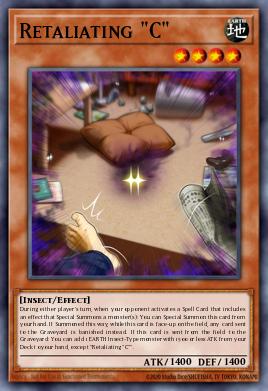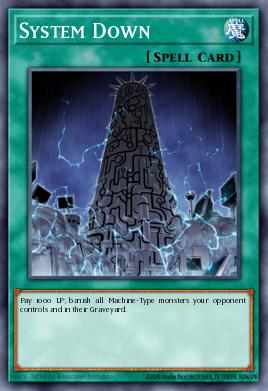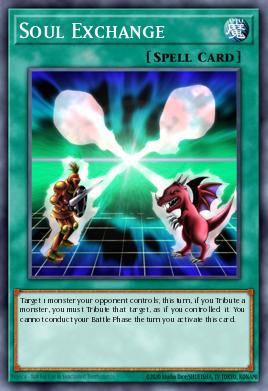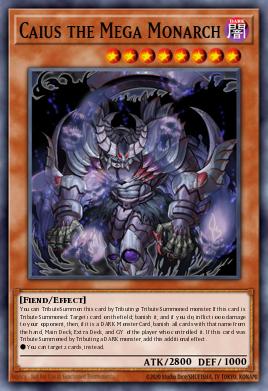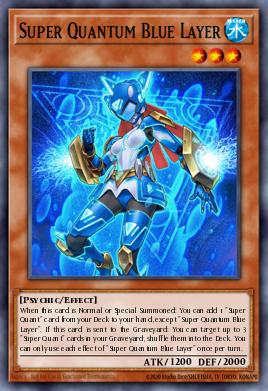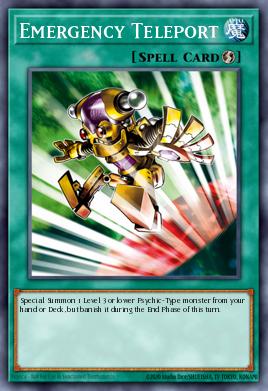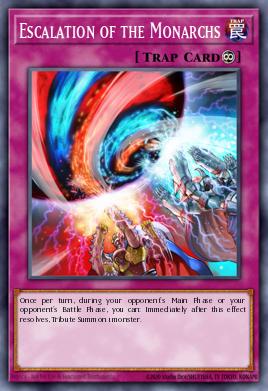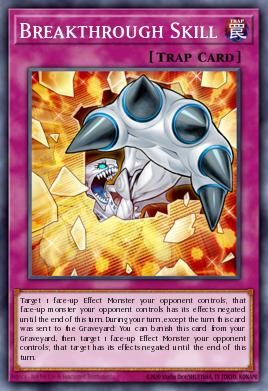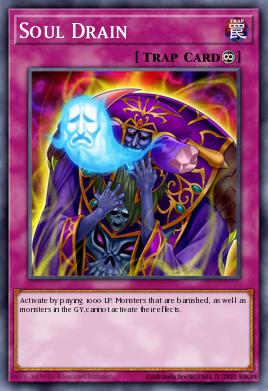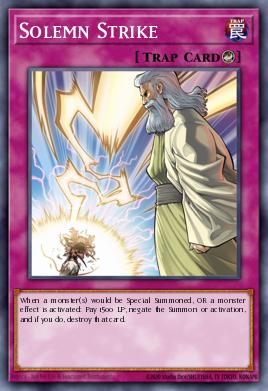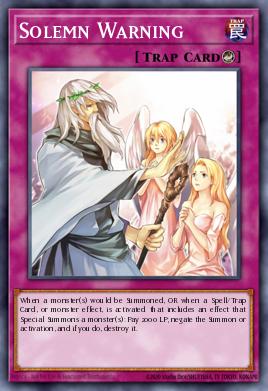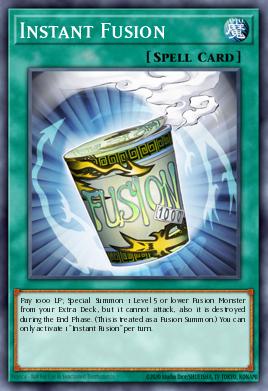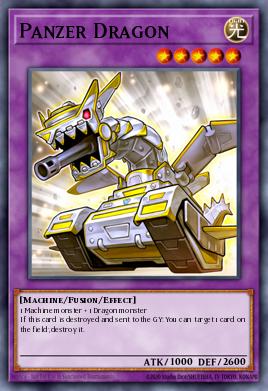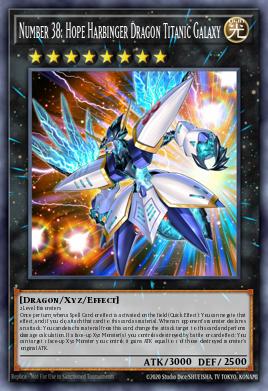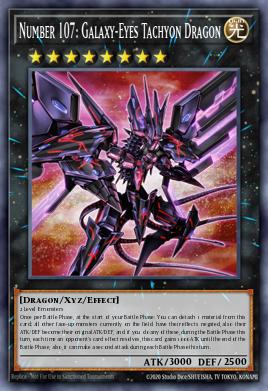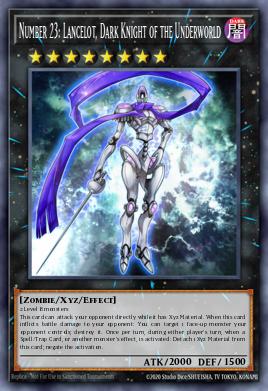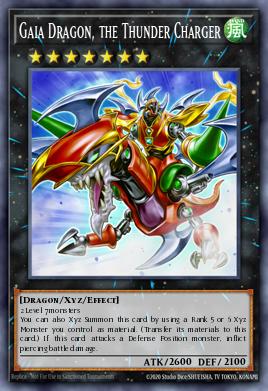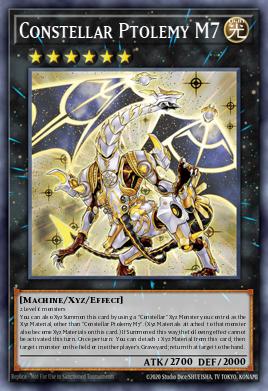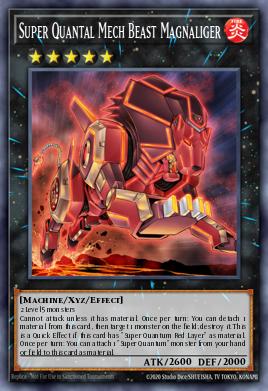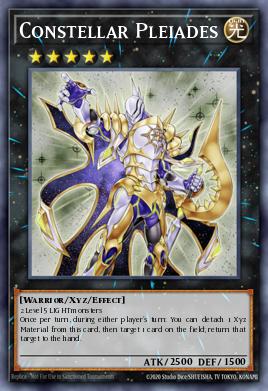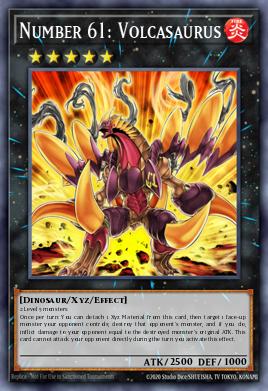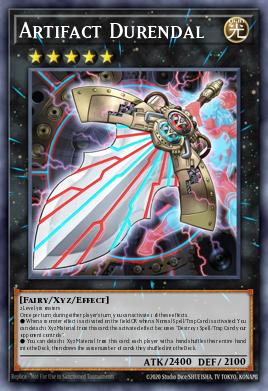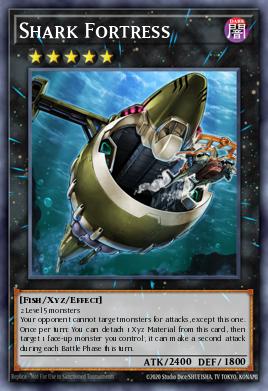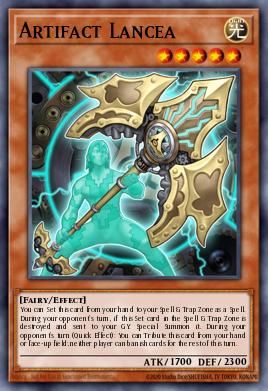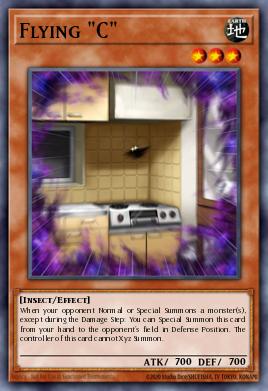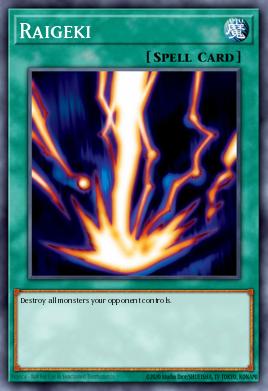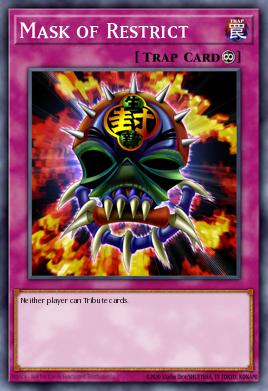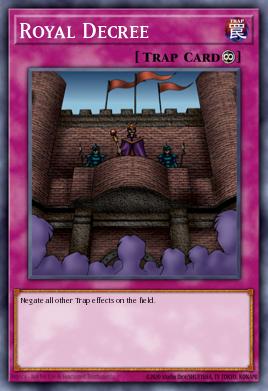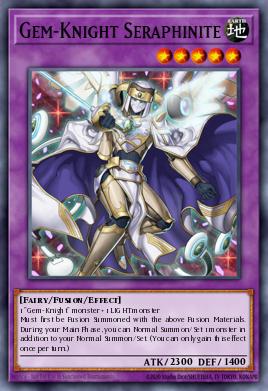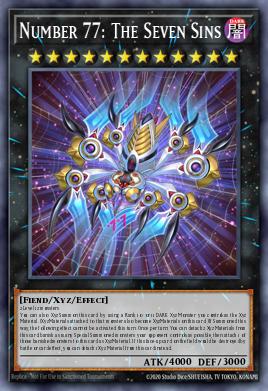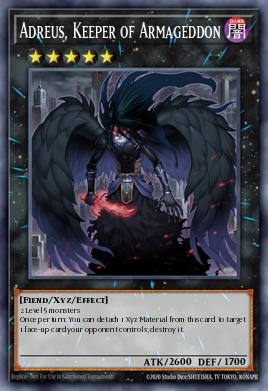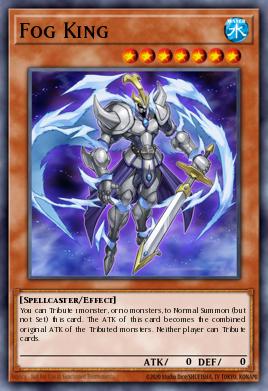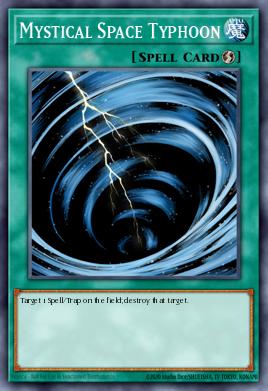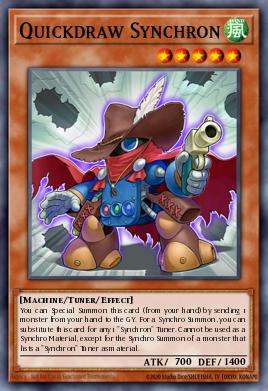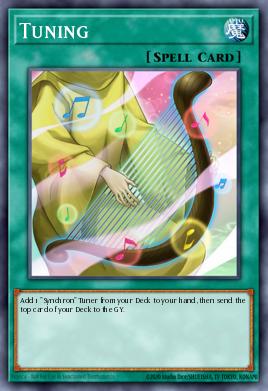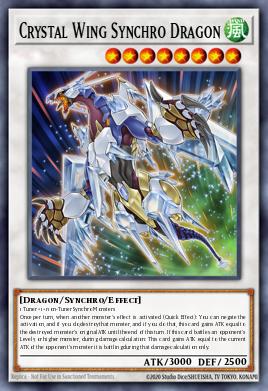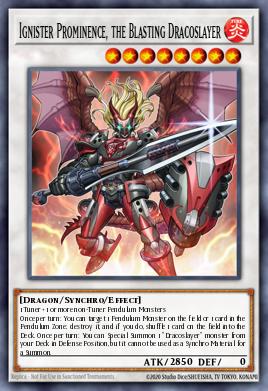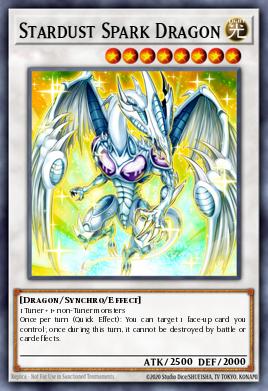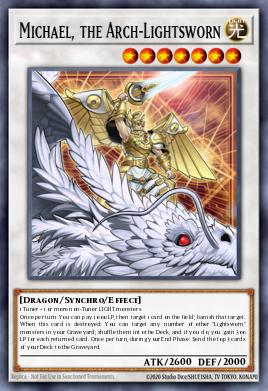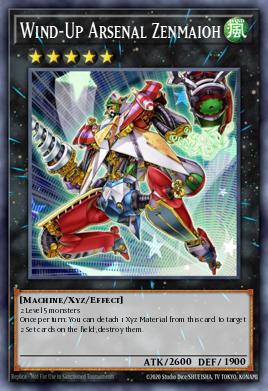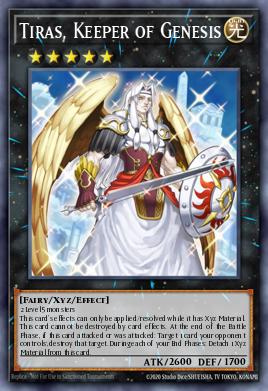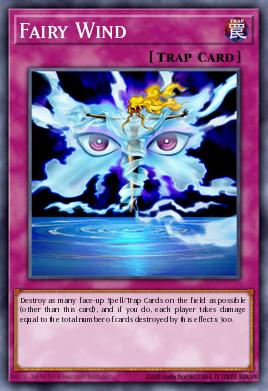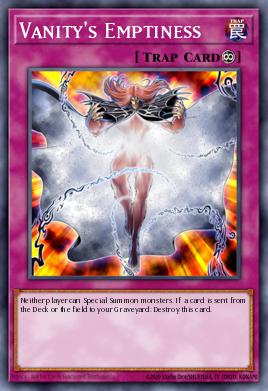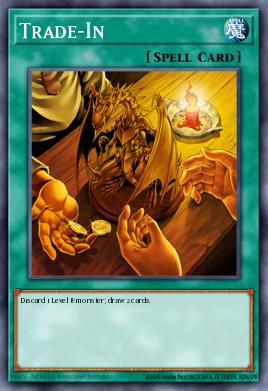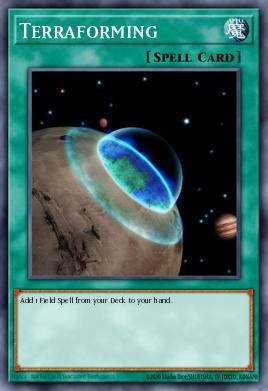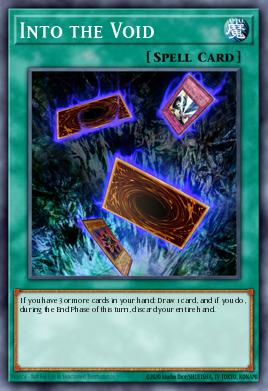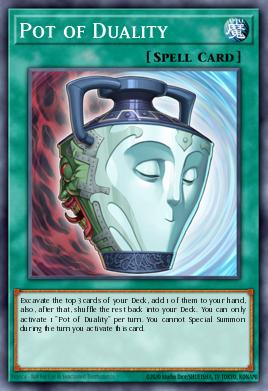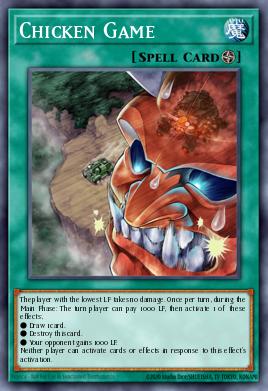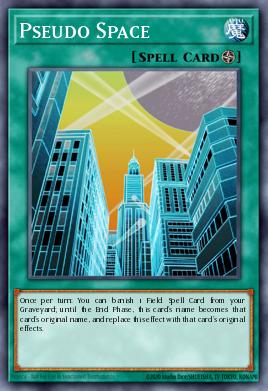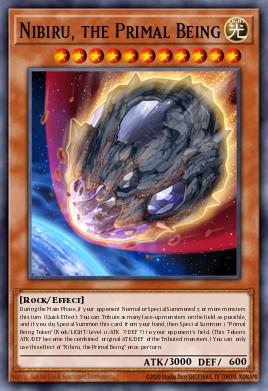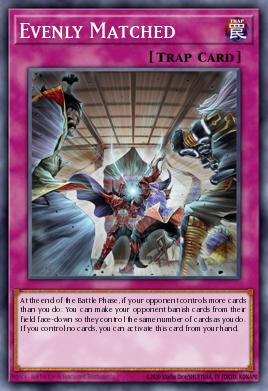A sovereign head of state, especially a king, queen, or emperor. That is the definition you get if you look up Monarch. Yu-Gi-Oh is familiar with their own Monarchs, and we can safely say that definition holds true for them. Monarchs are a group of monsters that debuted at the tail-end of Duel Monsters and beginning of GX. Since then, they have given us some of the most powerful tribute monsters in the game. In this series, I will go over the history of Monarchs to see their impact on the competitive Yu-Gi-Oh scene. We'll analyze each Monarch separately and look at some Decks known for their focus on these powerful cards.
Introduction
For many years before 2016, Monarchs were one of the most popular "archetypes" in the game's competitive history. I put archetype in quotes because technically they were more of a theme than an archetype. They never had the support that tied them all together. It was always other miscellaneous cards that you could use to provide good tribute fodder. Around 2013-2014, the time we were getting Mega Monarchs, we also received some Spell and Trap support to try and tie them together. These cards were made to offer more synergy between each Monarch and help summon them with greater ease.
Despite all the new Spells and Traps, you never really saw Monarchs spike to the prominence they saw in the early years. Then, everything changed in 2016. The Emperor of Darkness Structure Deck was released as the first of several in a retrain series of old Structure Decks, and tied the whole Monarch theme together. We had Monarch as an official archetype with two new, powerful Monarchs, better tribute fodder, and some more powerful Spells and Traps. All this support helped bring the Monarch theme back into the forefront. Today, I want to look at these cards and the successful Decks the support was played in.
The Monarch Support
To break down the support in a summarized form, we got 2 new Monarchs on top new tribute fodder and Spells/Traps to add some power. It all tied together to a fairly powerful Deck that brought an old theme in the limelight once again. Now, you didn't see many of the old cards, but at the very least a fan favorite theme were once again back on the scene. Let's look at the new monsters and the Spells and Traps that helped boost this theme back to being a meta contender.
Ehther the Heavenly Monarch
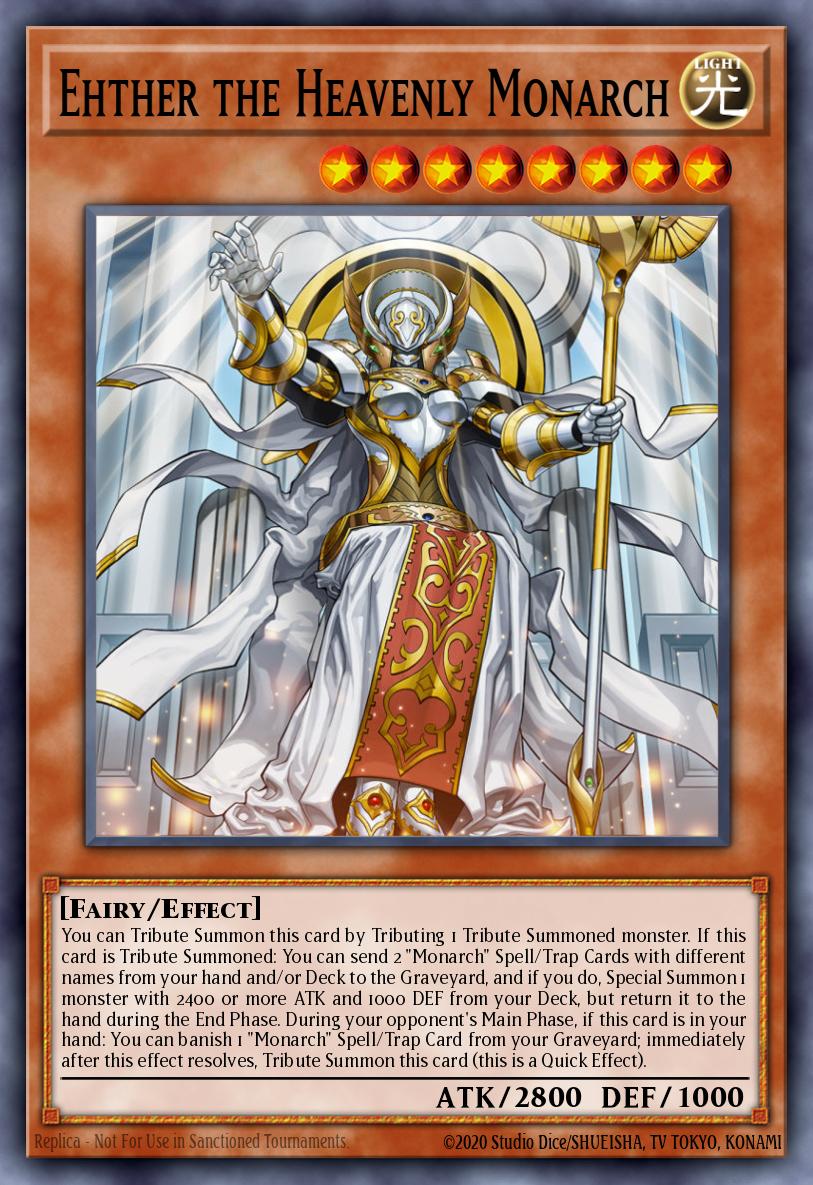
We start with one of the main new Monarchs: Ehther the Heavenly Monarch. Ehther had all the stats we saw on the Mega Monarchs: 2800/1000 stats, Level 8, can be Tribute Summoned using 1 Tribute Summoned monster, etc. What made Ehther stand out was its powerful effect. On Tribute Summon, you could send 2 Monarch different Spells/Traps from hand or Deck to the grave. In return, you can Special Summon any monster with 2400 or more ATK and 1000 DEF. The only downside is the summoned monster returns to the hand during the End Phase.
Not only did Ehther provide a quick way to get to the other new Monarch, but she also gave life to one of the older ones. Kuraz was never a card that saw much play in a competitive Deck until Ehther released. The power to Special Summon a Kuraz from Deck let you pop the cards you have already used for new draws. It helped add some more consistency to a Deck that had some bricking issues.
You could also Tribute Summon Ehther on the opponent's turn just by banishing a Monarch Spell/Trap from the grave. This synergizes well with one of their Quick-Play Spells to let you use an opponent's monster for a Tribute Summon. It offered an interruptive play just by summoning Ehther and potentially summoning Kuraz to pop opponent's cards if needed.
All these effects tied together to create one of the best Monarchs we've ever seen. Ehther was powerful enough in the strategy to get limited for several years in the TCG. It's now back at 3 as of writing, and it's still a key part to the Monarch strategy. It's a card you'll never go without if playing the Deck regularly.
Erebus the Underworld Monarch
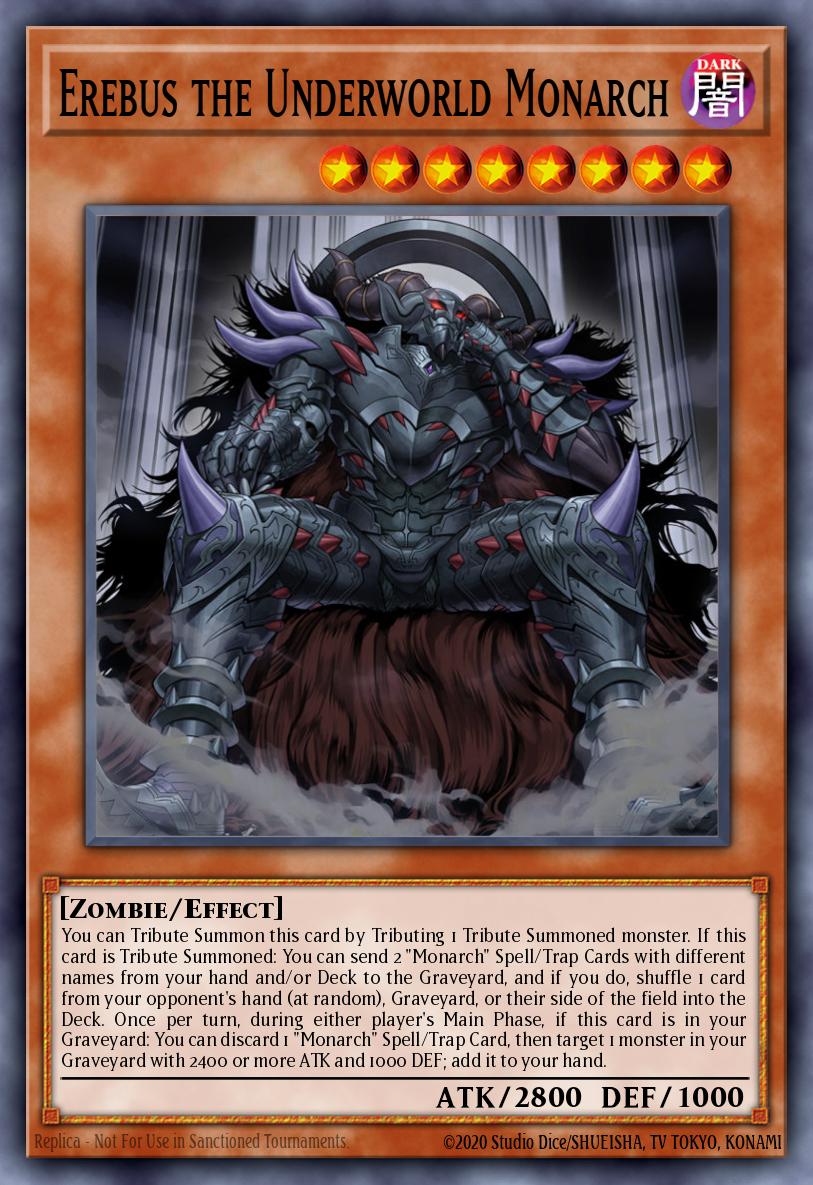
The second main powerhouse in the theme is Erebus the Underworld Monarch. Same regular stuff as Ehther, just different effect. On Tribute Summon, by sending 2 Monarch Spells/Traps with different names from hand/Deck to grave, you can put an opponent's card back in their Deck. This card can be on their field, in their hand (chosen at random), or in their graveyard. This gave Monarchs some nice and needed modern removal while also setting up their graveyard with the cards you want there.
Erebus also had a recovery effect for all Monarchs if it was in the grave. As a Quick Effect during either player's Main Phase, you could retrieve any monster with 2400 or more ATK and 1000 DEF from the grave. The lone cost was to discard a Monarch Spell/Trap, and most of those cards wanted to be in grave. It helped add some recovery to the archetype to get back Erebus or Ehther on top of several other targets. You could use the Mega Monarchs of your choice or potentially throw in Majesty's Fiend to get that lockdown effect.
Everything tied together for Erebus as well to make it another powerful card in the Deck. The removal of an opponent's threat to Deck and recovery were both fairly strong effects for a single card. Erebus is another one of those cards you'd always see in a Monarch Deck. The power it offers for you is too good to ignore.
The Two Squires
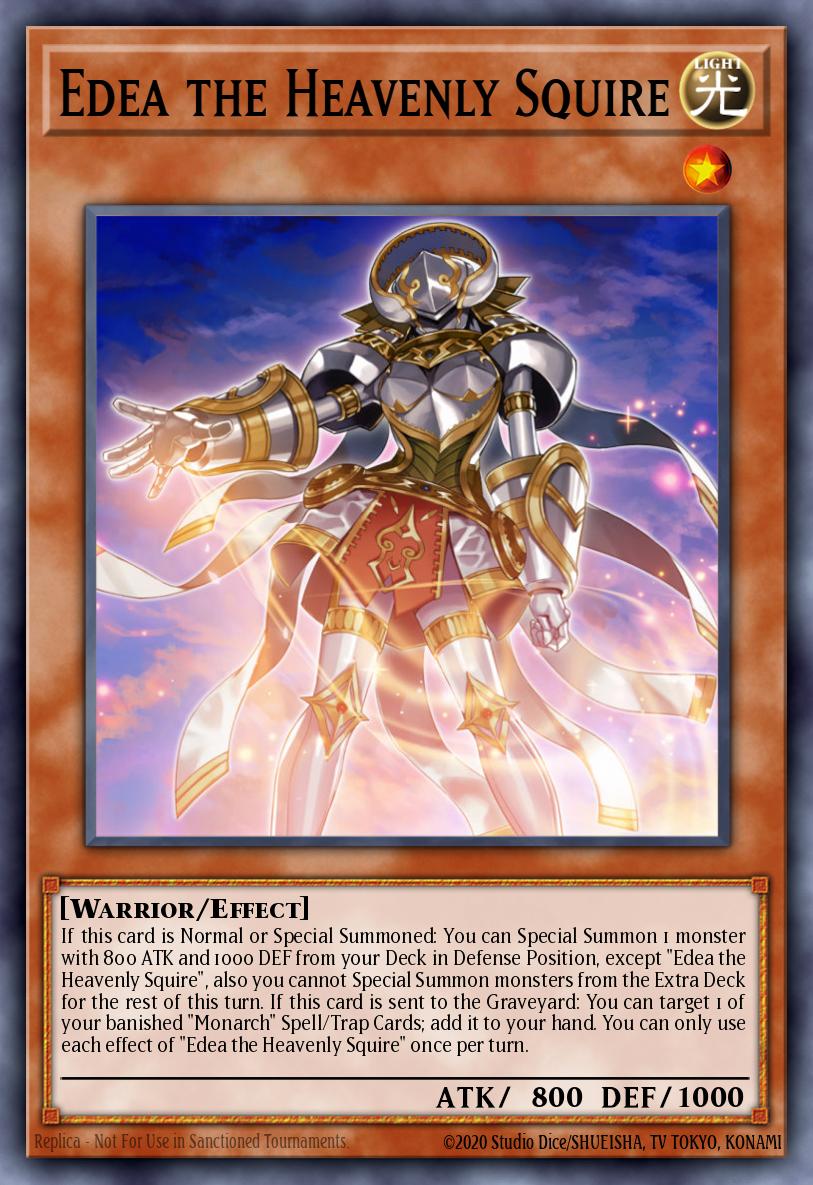
While the Monarchs themselves were powerful, the old tribute fodder options were not going to cut it. That's where the two Squires came in. Edea the Heavenly Squire is a nice Level 1 Warrior that summons a monster with 800 ATK and 1000 DEF from your Deck. The prime target was Eidos the Underworld Squire, who on summon let you Tribute Summon once that turn in addition to your Normal Summon/Set. This created some good and consistently accessible tribute fodder. Edea is searchable off Reinforcement of the Army and able to be summoned off One for One at least.
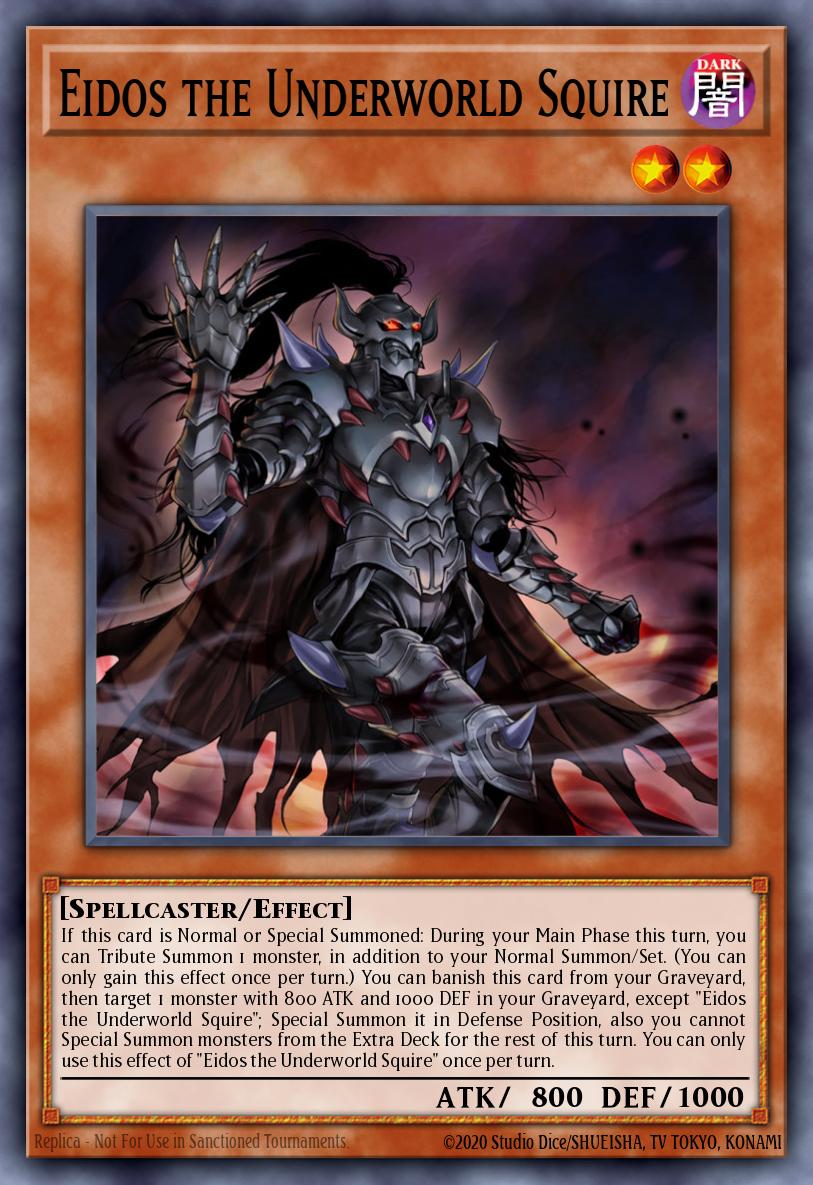
Oh, and both them had graveyard effects. Edea being sent to the grave let you recover a banished Monarch Spell/Trap, which they end up there often. Eidos, on the other hand, let you banish it from grave to summon a monster with 800 ATK and 1000 DEF from grave. This let you revive Edea and get the tribute fodder going once again. The second time, you could summon Mithra the Thunder Vassal. Mithra being tributed for a Tribute Summon let you gain an additional Tribute Summon that turn. The other Vassal cards did this too, but Mithra was the best. That's because Mithra's Special Summon effect just gave the opponent a Token, easily removable by your Monarchs.
The two Squires helped give super easy tribute fodder to help the Deck keep up with modern times. It was the Frog engine, but much better since it let you gain additional Normal Summons. This made your regular Normal Summon much more powerful since it's easy to make it an instant Tribute Summon. Another pair of cards you don't want to go without.
The Consistency Spells

Now for the Spell and Trap lineup to really tie things together. First off, you had two good consistency boosters. Tenacity of the Monarchs is a good Normal Spell to reveal your Monarch monsters to search any Spell/Trap of the archetype. Having instant access to whatever Spell/Trap you need in the moment is perfect for any archetype to have. The best target is their draw card, Pantheism of the Monarchs.
Pantheism can let you discard any Spell/Trap in the archetype you don't need for 2 new cards. The best consistency boost a Deck that has some bricking issues could ask for. You can also banish Pantheism from the grave during the same turn for more searching. On banish, you can reveal 3 Monarch Spells/Trap from Deck for the opponent to pick and add to hand. This can get you any 3-of you have in the archetype by just revealing all your copies. The search is the only hard once per turn, meaning you can draw for days with Pantheism at least.
One final consistency boost for the archetype is Return of the Monarchs. This card does lock you from your Extra Deck on the field, but you can get around this with Kuraz if needed. Return rewards your Tribute summons by searching any monster with 2400 or 2800 ATK and 1000 DEF from the Deck. Access to any Monarch you need is what we needed on top of Spell/Trap searching. Get your first Tribute Summon and search a monster you'll want to summon later.
The Monarch's Domain

Now, as a reward for keeping your Tribute Summoned monsters on the field, you get Domain of the True Monarchs. Domain makes Tribute Summoning your higher level monsters easier. Its first effect lets you reduce the level of any monster with 2800 ATK and 1000 DEF by two, making them single tribute monsters.
Once you control a Tribute Summoned monster and have no Extra Deck, you lock the opponent from theirs. This isn't a path every Monarch variant took, but the ones that did were highly successful. Keeping your Tribute Summoned monsters on field was also easier by giving them an ATK boost of 800 ATK. Overall, three good effects to tie together a perfect Field Spell for the archetype.
Easier Tribute Summons

Now to finally get to the cards to supplement Tribute Summoning more. First off we get the Quick-Play Spell known as The Monarchs Stormforth. Stormforth locks you from your Extra Deck the turn it's activated, but it lets you use any of the opponent's monsters for a Tribute Summon. It's a modernized version of Soul Exchange to let you use your opponent's monsters at a moment's notice. It synergized well with Domain making Tribute Summons easier and Ehther being able to be summoned on the opponent's turn.
Now we get to a very unique Trap. The Prime Monarch is a Continuous Trap that recycles Monarch Spells/Traps into the Deck for a draw. Nice consistency, but not really what we use this for. You want Prime Monarch in the grave as soon as possible. This way, you can banish any Monarch Spell/Trap from the grave to summon Prime Monarch as a monster. It can be done on either player's turn as well, letting you do it on the opponent's turn and yours. A Trap that can become a monster from the grave was unseen at the time of release, and really added more powerful tribute fodder to an archetype that already had the Squires.
The Monarch Variants
We looked at the key support cards, now we can get to the Decks. All six variants of Monarchs were able to make use of the new support. These are all mainly around the 2016 time period, except one variant that lasted longer. This is because Monarchs were hit by the end of the year they were released. It saw limitations to Ehther, Stormforth, and Pantheism. Those three being hit shattered most of the Deck's success. Even when they were all back at full power, you only saw 1 success in 2020. Either way, the support did leave a mark, so let's see what it all did.
Domain Variant
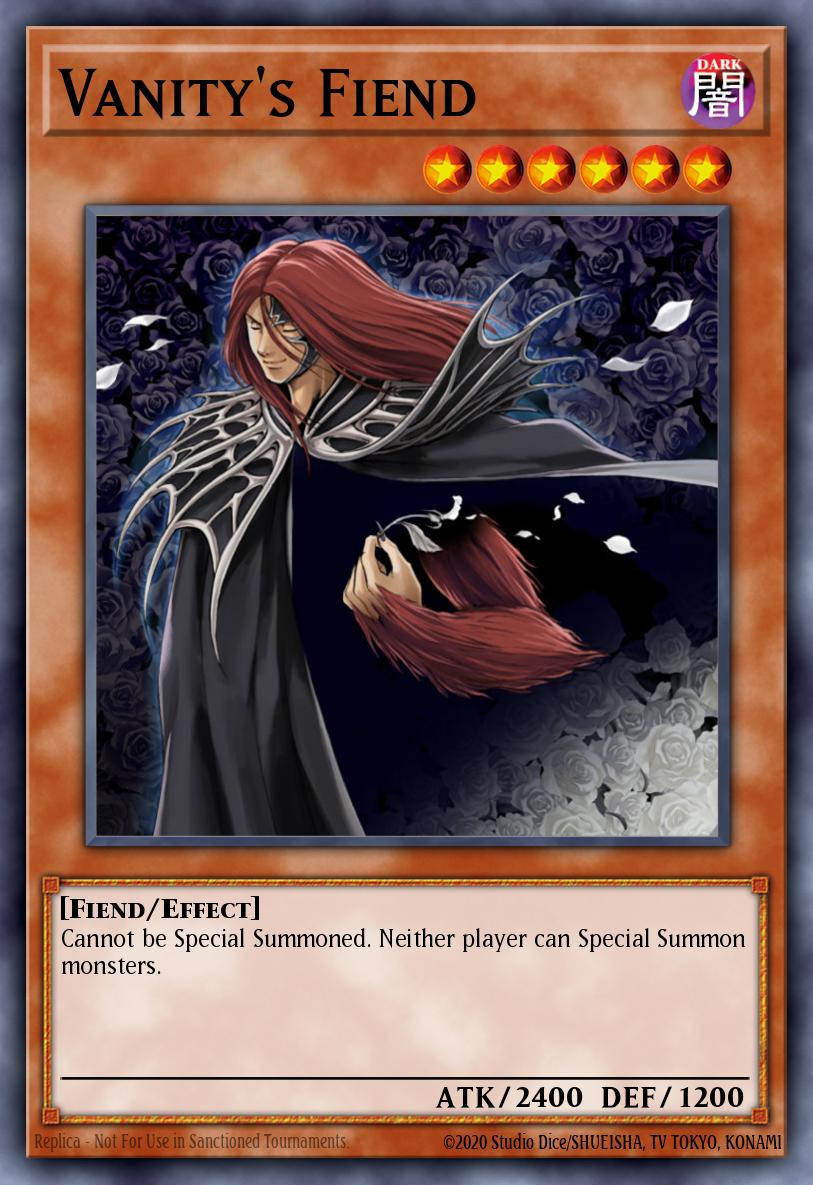
We start with possibly the best variant, as it's the one that stood the test of time the best. It's all based around the simple concept of locking the opponent from their Extra Deck. This did mean you weren't using an Extra Deck, but the price was worth the reward. You used the consistency cards of the Deck to get any of your Tribute Summons out as soon as possible.
Whether it was Ehther or Erebus, a Mega Monarch, or the often seen Vanity's Fiend or Majesty's Fiend, this was the only variant to see some success after the Deck's hits and the only variant to see some competitive success when every card was back at 3. I also imagine this will be the variant that returns to competitive action if we ever get more support. This Deck is just a testament to how good anything based on locking down the opponent can be.
Quantum Variant
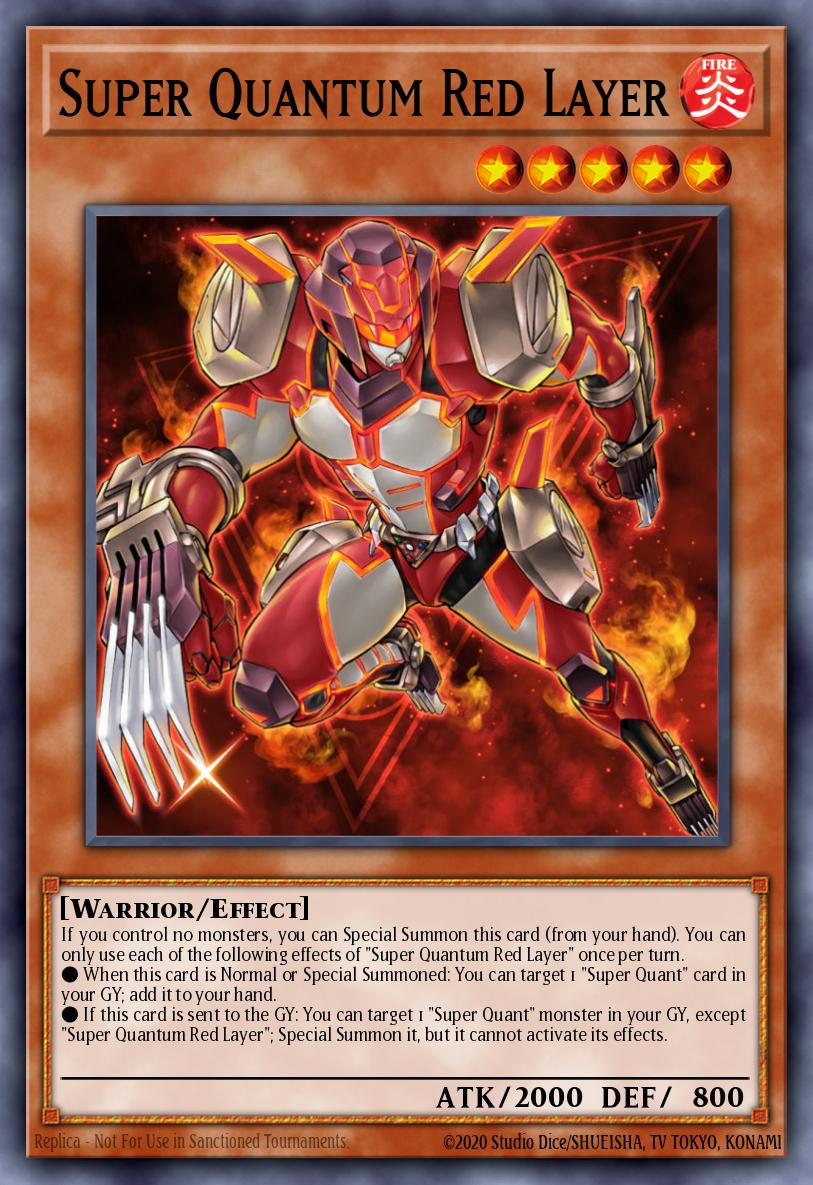
The next variant made use of a new tribute engine to rely on besides Squires. Wing Raiders brought us the Super Quant archetype, and therefore we had a nice package to provide more monster presence. Emergency Teleport was the key card in the engine when it was at full power. The main target was Super Quantum Blue Layer, who could always put itself back in Deck, so you only ever needed 1.
On summon, Blue Layer could search for any Super Quant card, which was often Super Quantum Red Layer. Red Layer's effect to Special Summon itself when you had no monsters was nice to have access to. Even when Emergency Teleport went to 1 and lost any real value of using Blue Layer, some Monarch variants would still try to use Red Layer. It was a pretty good little engine to provide more tribute fodder.
Extra Deck Variant

Now we established how good Domain was. But what if you don't want the floodgate effect of Domain? Well, Monarchs were able to find success accessing the Extra Deck. Ehther on her own can be an easy Rank 8, which luckily Number 38 was released around the time of the Monarchs. You had easy access to the Rank 8 pool besides Number 38, though. Popular options include Divine Dragon Knight Felgrand, Number 15, Number 23, and Number 107 to name a few.
You also had easy Rank 5 access with Prime Monarch and Red Layer. You could summon Number 61 or Shark Fortress for some fast damage, and rank them up to Gaia Dragon, the Thunder Charger when needed. Getting two Prime Monarchs together was easy, and they were summoned as LIGHT Level 5s. This meant quick and easy Constellar Pleiades access. The fact Monarchs could access a versatile and near unmatched variety of Extra Deck monsters made these variants very successful.
Brilliant Fusion Variant
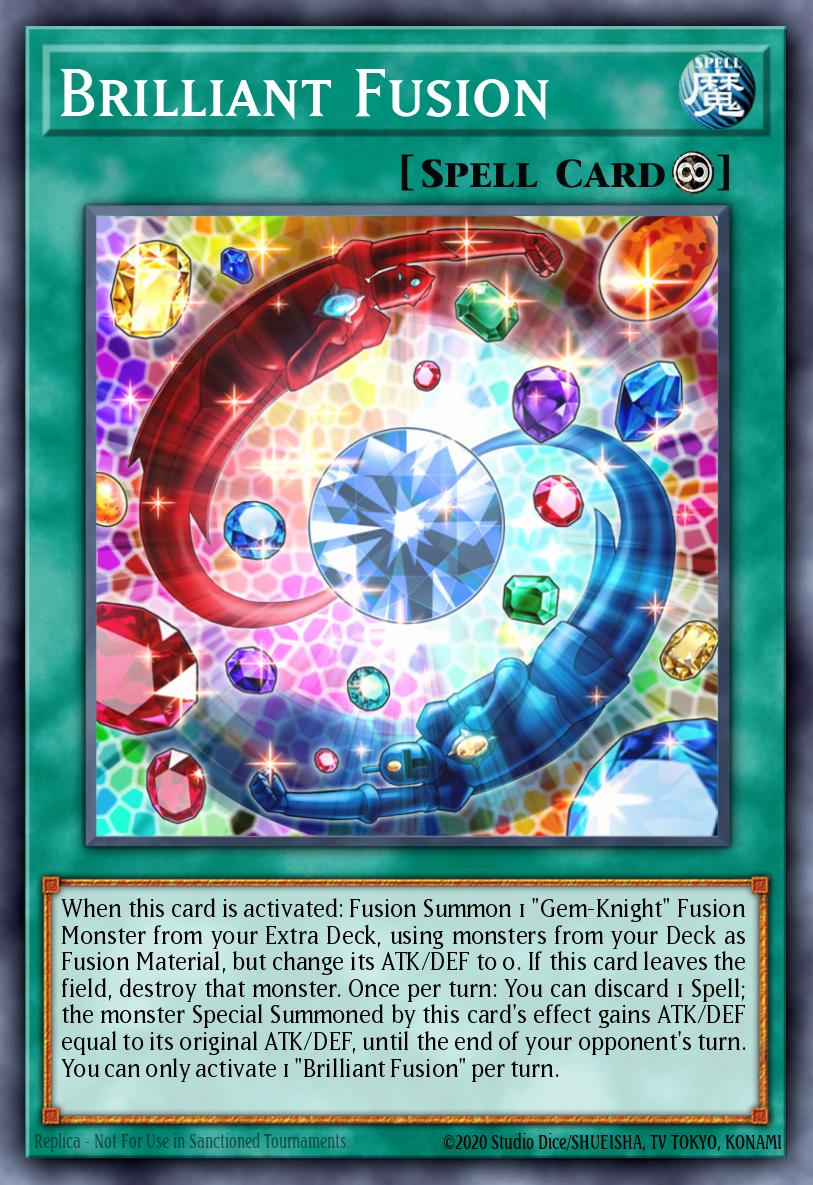
Besides Super Quantums, Monarchs were able to make use of one of the most popular engines in 2016. Brilliant Fusion was a powerful card to offer Decks that needed their Normal Summon a 2nd one. Getting Gem-Knight Seraphinite on board was also helpful for Monarchs for tribute fodder. Brilliant Fusion helped extend Monarch plays a fair amount when the card was legal. The fact it could send Edea from Deck to grave to recover a Monarch Spell/Trap was nice as well. The popular option seemed to be Gem-Knight Lazuli and Jack's Knight, though. This way, you get another LIGHT Level 5 since Lazuli can recover Jack's Knight, and you can make your Rank 5s. It was one of the cooler variants around this time, and one of my personal favorites.
Tzolkin Variant
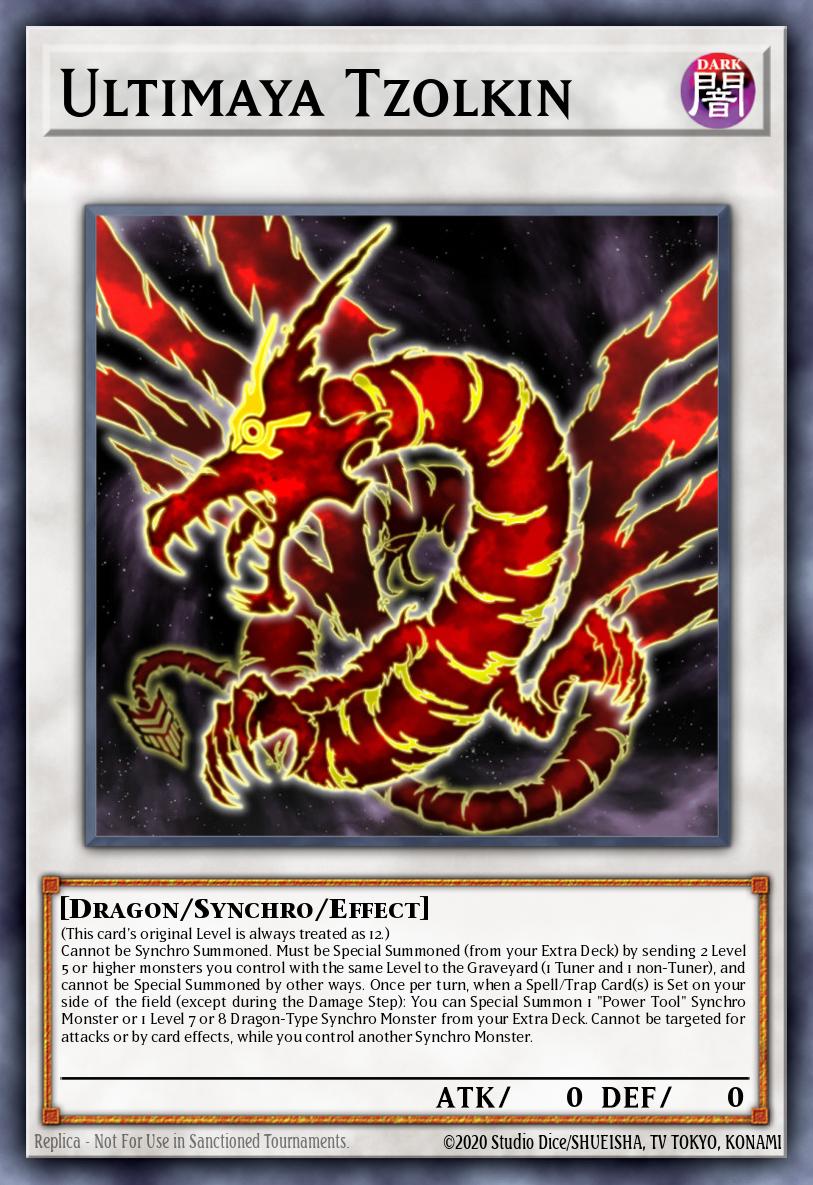
The final variant you can consider somewhat orthodox makes use of Ultimaya Tzolkin. Tzolkin is a powerful Synchro that lets you cheat out Level 7/8 Dragon Synchros just by setting Spells/Traps. Considering Monarchs aren't short on those, they have no issue triggering Tzolkin. This made for quick access to cards like Michael, the Arch-Lightsworn, Crystal Wing Synchro Dragon, or Stardust Spark Dragon. Pendulums being popular also means Ignister Prominence, the Blasting Dracoslayer access when needed. Once you get use out of Tzolkin, you have tribute fodder for your Monarchs.
Now, to summon Tzolkin, you needed a Level 5 Tuner to match your Level 5 non-Tuners. You already had Red Layer, Prime Monarch, and sometimes Instant Fusion to Panzer Dragon for the non-Tuner. For your Level 5 Tuner, you usually went to Quickdraw Synchron. It's a Tuner with an easy Special Summon effect, and it's searchable off Tuning. It ensured consistent access to Tzolkin to provide another powerhouse monster on top of your Monarch stuff.
Magical Explosion FTK Variant

Now for the unorthodox variant of Monarchs, a byproduct of Chicken Game still being legal. This Deck used few Monarch cards overall. Just 3 Ehther, 1 Erebus, 1 Domain, 3 Pantheism, and 3 Tenacity. All of it just to add consistency to the Magical Explosion FTK. The Monarch package helped load Spells in the grave as fast as possible on top of the draw power. Having Royal Magical Library also helped give more consistent draws. Ehther was a good Cards from the Sky target, while both Monarchs were good for Trade-In.
The goal was to use Chicken Game, Pseudo Space, and Upstart Goblin. This way you can get an 8000 LP difference for Life Equalizer. It also helped to have 3 Terraforming for the Field Spells. Once you resolve Life Equalizer and make both player's LP 3000, you should have enough Spells in grave for Magical Explosion. Into the Void also discarded your hand at the End Phase when used so you can activate Explosion as well.
What helped the Deck more is that it could side out the FTK. You already had some of the main cards for Monarchs in the Main Deck for consistency. All you had to do was drop 15 of the FTK cards for more standard Monarch cards and run a somewhat regular Monarch Deck. You didn't have everything, but you likely kept draw cards for consistency at least. It was a strange variant that is no longer possible, but it worked for what it set out to do.
Conclusion
This was a very good period of time for the Monarchs to finally become an archetype. They were perfectly suited to counter the meta at the time of Kozmo, Dracopals, and PK Fire. The Deck was unlucky to be released around the 3 week format of Performages and Pals, but Monarchs took off once that was hit. Domain was a powerful lockdown card for many players, but Extra Deck variants were also good. Sadly, Extra Deck variants don't have what it takes to do as well anymore. The meta is much faster now for that variant. It still works and is fun to try out, so feel free to.
After the Monarch cards all returned to full power in 2020, we only saw 1 topping Monarch list, and it was the Domain variant. It's the one you'll likely see the most success with, since almost everything still uses the Extra Deck. With that said, Monarchs seem to be done in the meta now barring new support. Either way, as the old Monarchs left a legacy on the game, the new support for Monarchs left an impact. It only lasted a few months due to how fast the Deck was hit and how harshly it was, but it was a powerhouse for its time. I would like to see Monarchs return to the forefront once again, but without good enough support, I do not think that would be likely.


